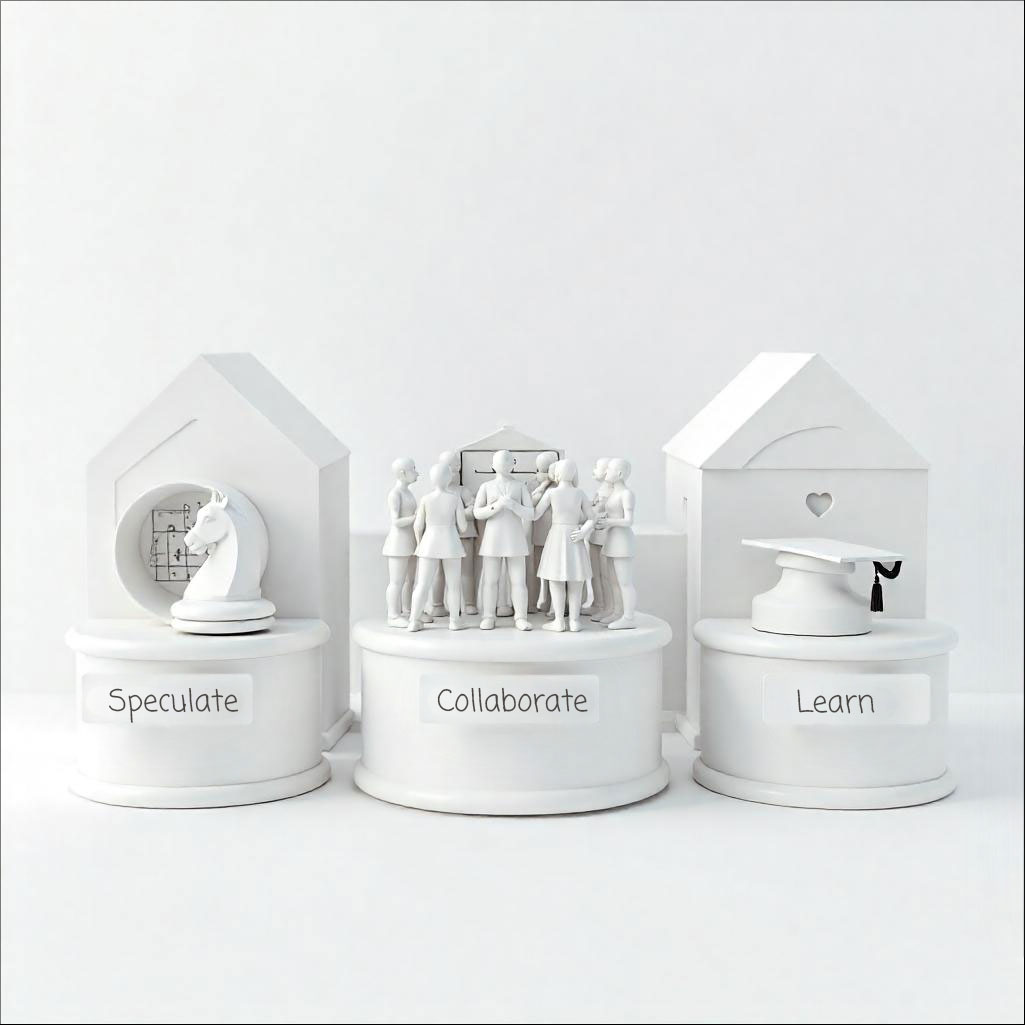Table of Contents
Executive Summary: Why ASD Principles Matter
The current project plan obsolescence rate of weeks makes Adaptive Software Development (ASD) an attractive framework for handling uncertainty. The core principles of this methodology consist of three straightforward elements: Speculate, Collaborate, and Learn.
Project managers and tech leaders can use these principles to manage complex situations while making quick changes and delivering valuable software during uncertain times.
A Brief Look at the Origins of ASD
The ASD methodology emerged during the mid-1990s through the work of Jim Highsmith and Sam Bayer because they became dissatisfied with the strict Waterfall approach. The approach aimed to represent actual software project behavior, which is non-linear, emergent, and messy.
The approach draws its principles from Complex Adaptive Systems and Chaos Theory to foster an organizational mindset that accepts change instead of fighting it.
? Want the full backstory?
Check out: The Evolution of Adaptive Software Development: From Chaos to Control
Overview of the 3 Core ASD Principles
Let’s break down what these core principles really mean:
| Principle | Short Description |
|---|---|
| Speculate | Planning based on hypothesis, not certainty |
| Collaborate | Building and delivering software through intensive teamwork |
| Learn | Using feedback and reflection to guide future direction |
These principles aren’t linear steps — they’re cyclical. Teams often revisit each principle throughout the life of a project.
Deep Dive into Principle #1: Speculate
What Does Speculate Mean in ASD?
The process of speculative development differs from traditional planning because it recognizes that requirements remain uncertain. The approach enables sufficient initial planning before it adjusts through feedback. And this is the most common scenario when a customer wants a product or software solution. It is ready only to provide their top-level story, which usually doesn’t include too many details.
Real-World Scenario: Launching a New Mobile Product
A fintech startup releases a budgeting application without determining which features users will find helpful. The initial roadmap is speculative. The roadmap transforms based on the usage data that becomes available.
Key Techniques
- User Story Mapping functions as a visual planning method that organizes user activities and stories to create shared understanding and feature prioritization through real user journeys.
- Progressive Elaboration represents the process of developing detailed project requirements through additional information collection which enables flexible adaptive planning.
- Scenario Planning is a strategic approach that involves envisioning multiple potential futures and planning for each, helping teams navigate uncertainty with preparedness.
Recommended Tools
- Miro for collaborative storyboards
- ProductPlan for visual roadmaps
- Atlassian Jira for hypothesis-driven backlog management
Deep Dive into Principle #2: Collaborate
Collaboration: Not Just Teamwork
Collaboration in ASD doesn’t require just working together. It’s about shared ownership, real-time communication, and flattening hierarchies. Teams are cross-functional and empowered.
Case Example: Global Remote Team Working on SaaS
A distributed team spanning four time zones co-develops a new SaaS tool. Daily syncs or even weekly, depending on the project complexity and the team’s maturity, shared OKRs, and pair programming enable tight alignment.
Key Techniques
- Mob Programming
The whole team works on the same task at the same time to improve code quality and team cohesion. - Collaborative Design Workshops
Interactive sessions unite stakeholders with designers and developers to create solutions through collaborative co-creation while achieving early process alignment. - Agile Ceremonies (with flexibility)
The team used modified versions of stand-ups, sprint planning, and retrospectives to maintain structure while encouraging adaptability.
Recommended Tools
- Slack or Microsoft Teams for async and sync comms
- Confluence for collective knowledge
- Lucidchart for real-time design diagrams
Deep Dive into Principle #3: Learn
Learning: The Engine Behind Adaptation
The core principle of Adaptive Software Development requires learning to be integrated into the design process from the start. The team needs to find feedback while examining results to incorporate these insights into the ongoing process.
The traditional approach emphasizes plan adherence, but ASD emphasizes evidence-based adjustments.
Real-World Scenario: AI Team Optimizing a Recommendation Engine
The machine learning team conducts continuous development of the recommendation system. The team assesses both actual user feedback and performance metrics following each deployment. The product improves through time because each new insight modifies both training data and approach.
Key Techniques
- Retrospectives (formal and informal)
Regular team reflections to evaluate what went well, what didn’t, and how to improve processes in future iterations. - Post-mortems and Root Cause Analysis (RCA)
Structured evaluations of failures or issues to uncover underlying causes and implement preventive measures. - Continuous Delivery pipelines with telemetry feedback
Automated deployment setups that include real-time performance and error monitoring, enabling data-driven learning from production behavior.
Recommended Tools
- Retrium for facilitated retrospectives
- Jenkins/GitHub Actions for automated deployment and testing
- Power BI, Grafana for feedback loops via metrics dashboards
Visualizing the ASD Cycle
Here’s a simplified illustration of the ASD development loop:
Speculate → Collaborate → Learn → ↻ (repeat)
This loop is non-linear. Teams may shift back and forth based on what they discover, rather than follow a fixed sequence.
| Principle | Goal | Team Behavior | Common Tools |
|---|---|---|---|
| Speculate | Hypothesize and start quickly | Plan loosely, adjust frequently | Miro, ProductPlan, Jira |
| Collaborate | Leverage shared intelligence | Work openly and cross-functionally | Slack, Confluence, Figma |
| Learn | Reflect and improve | Review and adapt rigorously | Retrium, Grafana, Power BI |
Comparing ASD Principles with Agile and Scrum
| Dimension | ASD | Agile (General) | Scrum |
|---|---|---|---|
| Planning Approach | Hypothesis-driven | Iterative goals | Sprint planning with backlog |
| Collaboration Model | Flat, team-empowered | Varies | Defined roles (PO, SM, Team) |
| Learning Mechanism | Cyclical feedback & adaptation | Continuous improvement | Sprint retrospectives |
? Want a detailed methodology comparison?
Read: Adaptive Software Development vs Agile, Scrum, and Waterfall: Key Differences
Common Pitfalls and Misunderstandings
Understanding the spirit of each principle is essential. Misapplications are common:
- Speculate ≠ Guessing
Speculation is structured and informed. It’s about hypothesizing, not shooting in the dark. - Collaborate ≠ Groupthink
True collaboration doesn’t mean everyone agrees. It means everyone contributes, and decisions are made transparently. - Learn ≠ Only After Failure
Learning happens during success as well as failure. Good outcomes still merit analysis.
Practical Recommendations for Project Managers and Team Leads
I recommend preparing with a team before applying for ASD for the first time. It can help to set the baselines and tune the mindset of all involved parties.
- Build Team Readiness
- Run short training workshops on ASD principles.
- Appoint an internal champion to lead adoption.
- Shift Leadership Style
- Focus on enabling rather than commanding.
- Facilitate communication instead of filtering it.
- Prepare Stakeholders
- Explain speculative planning as a risk-reduction strategy.
- Involve them in feedback loops (not just approval gates).
- Define Lightweight Metrics
- Track iteration velocity, feedback quality, and learning artifacts.
- Measure team health alongside delivery metrics
FAQs on ASD Principles
1. Can I use ASD principles within a Scrum framework?
Absolutely. Many Scrum teams adopt speculative backlog planning and enhance retrospectives to align more with ASD learning.
2. Do these principles apply to non-software teams?
Yes. ASD principles are used in marketing, education, R&D, and even product strategy groups.
3. Isn’t speculation dangerous in regulated environments?
Not if it’s controlled and iterative. You still meet compliance — but through cycles of tested, validated outputs rather than one huge delivery.
4. How often should we revisit our “speculations”?
Every sprint or cycle. Speculation should evolve as fast as your user feedback does.
5. What’s the biggest barrier to ASD adoption?
Cultural inertia. Teams and leaders often struggle with embracing uncertainty and real-time adjustment.
6. How do we measure “learning” effectively?
Use outcome-based reviews, improvement metrics, retrospective quality, and even stakeholder satisfaction scores.
Applying ASD Principles in Today’s Projects
The Speculate → Collaborate → Learn cycle represents more than a process because it functions as a mindset. The principles enable teams to succeed in real-world development environments because static plans break down while adaptability proves successful.
Project managers and leaders who adopt ASD must retain their organizational structure. The structure evolves through flexible adaptation which becomes stronger with each new iteration.
The principles of Adaptive Software Development become effective for delivering smarter and faster projects with better resilience when you implement appropriate tools and techniques and mental adjustments in uncertain environments.

